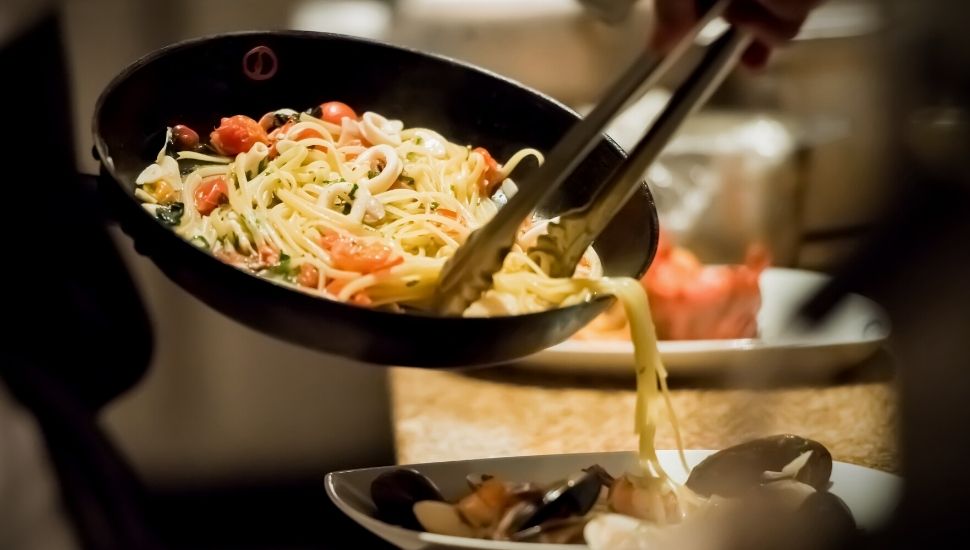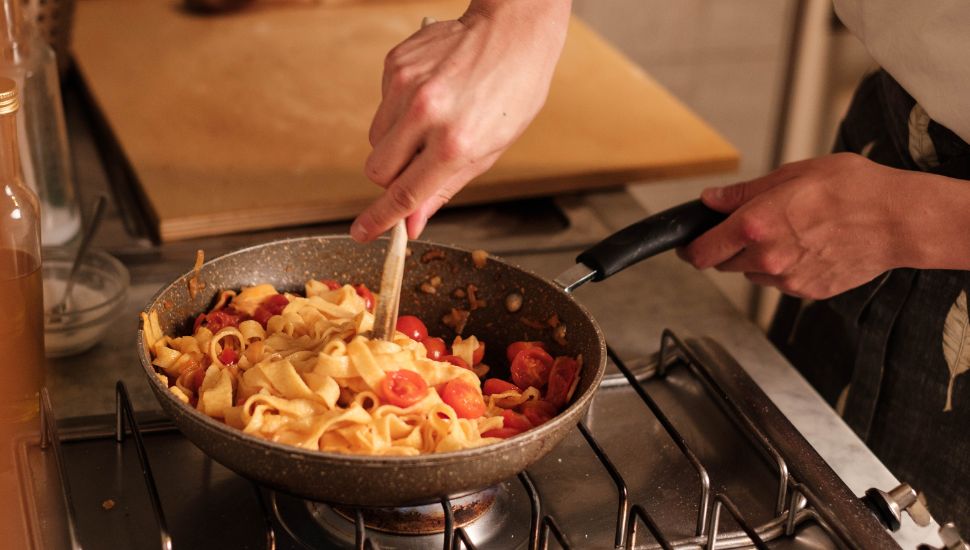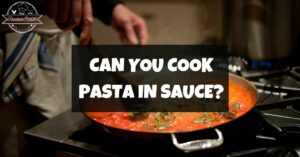
Since I was a young kid, food has always been my best friend. I have always enjoyed eating and cooking. As a kid, I always wanted to be a chef and own a restaurant when I grew up.
Unfortunately, I couldn’t fulfill that dream, but I never stopped cooking and having people over for lunches and dinners.
Although I love making all kinds of food, one of these has always had a special place in my heart. Yes, you guessed it right, I am talking about Pasta. Eating pasta in Italy, the home of pasta, has always been the number 1 thing on my bucket list.
But until you and I experience what it feels like to have pasta in Italy, let’s see how to make perfect, non-sticky, and tasty pasta at home. So stay with me till the end of this blog as I share the secret of making perfect pasta at home.
How To Keep Pasta From Sticking?
One thing that I can never withstand is sticky pasta. It not only looks bad but also tastes gummy and chewy and ruins the taste of pasta.

Over the years of cooking pasta, I have learned how to make non-sticky pasta, so follow these simple steps to make perfect pasta.
#1- Put In A Bit Of Oil Or A Piece Of Butter.
Making pasta that does not stick together starts with the first step of boiling water. If you plan to eat your pasta without any sauce, adding a bit of oil or butter to your boiling water is very important.
I prefer adding a few drops of olive oil to the water, as it not only prevents the pasta from sticking but adds a little flavor to it as well.
#2- Avoid Overdrying.
One mistake that I used to make when I first started making pasta was that I used to keep it in a strainer while I prepared my sauce. Doing this makes the pasta dry and causes it to stick together.
Make sure you make your sauce first, then boil your pasta and add it to the sauce soon after draining its water. This way, the pasta does not dry up and stays separate.
#3- Keep Stirring Continuously.
I often see people adding pasta to the boiling water and walking away until it is cooked. If you like clumps of pasta, this is the right thing to do, but if you don’t want your pasta to stick together, stir it at regular intervals.
Stir it once you add the pasta to boiling water, then once or twice in the middle and again towards the end of the cooking time.
#4- Ensure That The Water Is Boiling Before Adding Your Noodles.
I always tell people making pasta is all about timing and patience. Waiting for the water to boil properly may seem hard, but trust me, that one or two minutes extra will make a massive difference in how your pasta will turn out.
Adding pasta to water before it boils completely will make the pasta gummy and chewy and cause it to stick together.
#5- Put Some Salt In The Pasta Cooking Water.
Now you may wonder, what does salt do with non-sticky pasta? Yes, you’re right, adding salt does nothing to prevent your pasta from being sticky, but it does add flavor to your pasta, and as they say, “Flavor is King,” so your pasta must have all the necessary flavors as well.
#6- Do Use Plenty Of Water.
Just like drinking a lot of water is vital for your health, using plenty of water to boil your pasta is also essential. Make sure the pot has enough space for the pasta to expand.
Pasta will release starch while it is being cooked. And if there isn’t enough space, the scratch will stick to the pasta, making it sticky and gummy. I would recommend using a liter of water for every 100 grams of pasta.
#7- Make Sure To Keep Your Noodles Whole.
If you want to face the wrath of pasta Gods, break your pasta into smaller pieces. Never, I repeat, never break your pasta.
It may seem logical since dry pasta might not fit in your pot, but if you hold it for a few seconds and let it get soft, it will eventually fit.
Keeping your pasta whole may make little difference taste-wise, but it sure does has a lot of impact in terms of the aesthetics of the dish.
#8- Use Cold Water For Rinsing.
You may be surprised that the pasta will continue to cook even after removing the heat and draining the water. Rinsing the pasta with cold water will reduce its temperature and stop it from cooking.
#9- Dust With Flour
I don’t really like eating ready-made pasta that can be bought from grocery stores, so make my pasta at home, and if you do so as well, this is one important tip for you.
Fresh pasta releases a lot of moisture that causes the noodles to clump together. To avoid this, dust your sheets before you cut your noodles and dust them before you portion them.
Final Verdict:
So there you have it, the perfect and the easiest way to make fresh and tasty pasta that does not stick to each other. These are some of the things I have learned over the years of cooking.
I hope you find these tips helpful and make some delicious pasta for yourself, your friends, or your family. This is it for now, and I will see you very soon with some new and exciting tips and tricks to ensure you become a culinary wizard.
Related readings:
- How to keep bread from molding
- Why is my cookie dough sticky
- Can you bake cookies on wax paper
- Why are my cookies cakey
Frequently Asked Questions
How Do Italians Stop The Pasta From Sticking?
Italians use a lot of water while boiling their pasta; this allows the starch to disperse and would not make the pasta sticky, preventing clumps. They also drizzle some olive oil on their pasta.
Does Olive Oil Prevent Pasta From Sticking?
Yes, olive oil does prevent pasta from sticking. If you don’t have olive oil, you can also use some butter.
But use oil or butter only if you aren’t going to add any sauce to your pasta, or else the sauce won’t stick to the pasta.
How Do Restaurants Keep The Pasta From Sticking?
Restaurants use a lot of water while boiling pasta and drizzle olive oil on the pasta once it has cooked. Restaurants boil their pasta in bulk, so adding olive oil keeps it fresh for extended periods.







